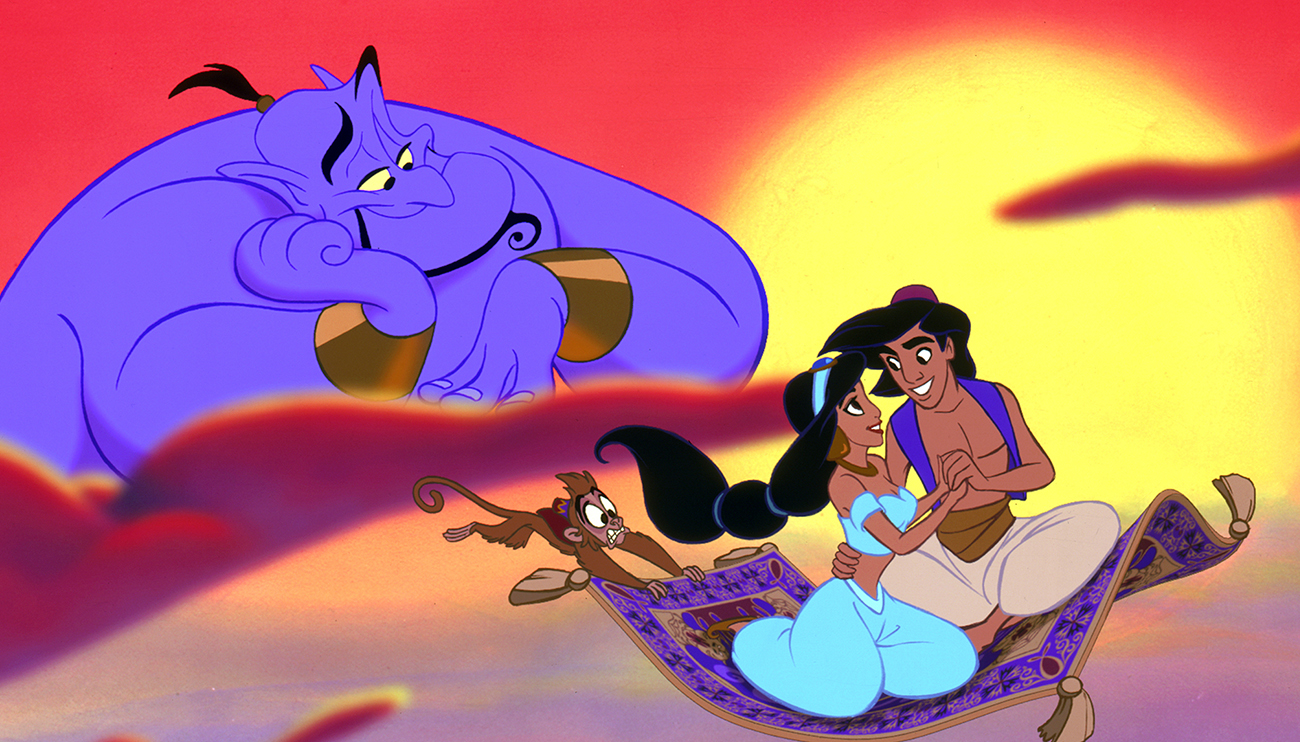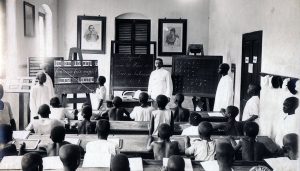Last month, Disney announced that it had finally chosen its lead actors for the new “Aladdin” film after a long journey in search for the perfect Aladdin and Jasmine.
Debate around the original Disney movie is resurfacing 25 years after the premiere of the animated production. At the time, the film had proven to be extremely successful but was also met with its fair share of controversy.
The film, released in 1992, won two Oscars, one for “Best Original Song” (A Whole New World) and one for “Original Music Score”. It was nominated for many others. It made $200 million at the box office, a record-breaking amount in the animation industry at the time.
Many reports and commentaries claim that the remake of this film is Disney’s chance –a chance it squandered– to improve its reputation. It was claimed that by hiring actors of Arab descent, this adaptation will not whitewash characters. Disney further claimed that it will prove the importance of diversity and respect for different identities, whether in regards to religion, race, or sexuality. This is exactly what Disney tried to achieve in the film “Moana”, which follows the quest of an indigenous girl, who lives on an island, to save her family. In reality, it was a dismal attempt to create marketable productions from different cultures.
Disney expected that it would create enough cultural variety in “Aladdin” by conducting casting auditions in Arab countries. As a result, it flooded us with its reports on these auditions, as if no one had ever done what they are doing before, or as if Arabs were obliged to feel nothing but gratitude towards their efforts. The media portrayed these auditions as frustrating, disappointing, and hopeless, because, apparently, it is hard to find someone who looks like an Arab and is a talented singer and dancer.
In a similar situation, during the process of casting the first Harry Potter film, the production team conducted a wide, exhaustive search in order to find a talented British boy who had natural green or blue eyes. These auditions were described as “an exciting, encouraging casting frenzy”. It seems like Disney and the media are saying “if only we could whitewash, this would be so easy,” as if difficulty were an excuse to bring in a white actor in blackface to play Aladdin, and perhaps slap a big nose on him for added effect. Disney must have considered doing this, but the possibility of an unexpected backlash seems to have stopped them. It is worth mentioning that, at that point, Disney was considering hiring an Indian actor for the role. The difficulty they publicised therefore means that Bollywood’s entire legion of actors did not appeal to Guy Ritchie, the film’s white director.
Disney made many mistakes, even before entering production on the new film. For example, the advertisements to recruit actors, directed towards both Middle Eastern and Indian actors, were indeed annoying. While Indians and Arabs might have similar features, this simplistic conflation of the two cultures signals an ignorance offensive to both cultures. It seems that Disney thinks it knows how Arabs should look, and how they can be portrayed, better than Arabs themselves.
In the first animated production of the movie, Disney was accused of racism for a number of reasons. For example, the people and the setting looked more like India than a city in the Middle East. However, Disney dismissed this and insisted that it was a city of a certain era in the Middle East. This may seem exaggerated, but this is still happening now. In a casting call, Disney announced that it was looking for actors and actresses from the Middle East and India. If their claim that they are capable of making the distinction between Arabs and Indians were true, the actress Naomi Scott -of Indian descent- would not have been cast as Jasmine in the new production of the film.
Facebook, Twitter, and other different social media platforms witnessed contributions to the hunt for the right actors, as some suggested names like Hiba Tawaji, Jade Thirlwall, and many others for the role of Jasmine. In fact, the effort appearing on social media seems to have exceeded Disney’s, which could not be bothered to dig deep into history. In the eyes of Disney and Hollywood, the stereotypical image of the Arab girl– the belly dancer with a small waist and long hair– and the dark-skinned, jealous, and chivalrous Arab man defending and protecting his women from harm’s way, is much more attractive than actual Arabs, who are truly boring in reality. Within the orientalist and racist imagination, these stereotypes look more true than real Arab.
There are bigger and more complex issues regarding the film that won’t be solved by choosing Arab actors and actresses. One of these biggest issues is the script that will be performed by these actors and actresses. The first person who suggested the idea of the film was Howard Ashman. At the time, the suggested version of the movie was closer to the story Aladdin and the Magic Lamp, which can be found in the newer version of the book One Thousand and One Nights. However, this story was dismissed. Many scriptwriters and lyricists worked together on developing the plot. The scriptwriters all shared a similar trait; they were all white. And it was never mentioned – not even once – that they were required to know anything about the cultural background of these Arabs about whom they were writing a movie. Despite the fact that the original text was set in China, the Americans decided that the film must look “Arab” by using a sultan instead of an emperor in the story, which, in their imaginations, seemed more appealing.
After creating more than one script, the final one agreed upon on was a combination of the story Aladdin, the story from movie The Thief of Bagdad, and a few orientalist elements which would, surely, grab the attention of unassuming American children. The filmmaker were not concerned with either Arab culture nor the context in which the the movie will be made. For example, the development of Aladdin’s character in order for him to look like the white American actor, Tom Cruise, in and of itself, demonstrates disdain. For starters, the actor does not have a shred of Arab in him. I cannot help but think that he was chosen because of his big nose which, coincidentally does not make him any less conventionally attractive. As for the rest of the characters, namely the villains, they were drawn with a dark complexion, large, ugly noses, and thick eyebrows or uni-brows. Tom Cruise was not the only out-of-place inspiration for the characters in the film, contributing to the film’s whitewashing. The other main character in the movie, Jasmine, was inspired by Jasmine Guy and Beth Allen who was the artist’s sister. The artist tried to search for models with black hair, but he could not find any inspiration except from his sister’s picture that was in his wallet.
And speaking of orientalism, the plot was heavily derived from One Thousand and One Nights with huge changes, changes that were added to the Arabic version by a French man who said that he heard these stories from a Syrian man. This book has caused – and still causes – heated argument. The orientalist obsession with this book was huge, and as some of the stories were taken from Persian folklore, people get mixed up between the origin of the book and whether the stories are only from the Levant or from India, Pakistan, and Iran.
When Disney’s Aladdin premiered in the 90’s, Arabs were excited to watch it, since Arab characters had never been portrayed as heroes before. Yet, people soon discovered the racist jokes and depictions promoted by Disney in the movie. The film opens with the song “Arabian Nights” which, in describing the city where the story is set, says: “Where they cut off your ear if they don’t like your face, it’s barbaric, but hey, it’s home.” Disney apologised, fixing the verse in the new ‘improved’ version of the film production– as if it were the only insulting thing — to: “Where it’s flat and immense, and the heat is intense, it’s barbaric, but hey, it’s home.”
At the time, Roger Ebert, the famous movie critic, wrote: “one distraction during the film was its odd use of ethnic stereotypes. Most of the Arab characters have exaggerated facial characteristics–hooked noses, glowering brows, thick lips– but Aladdin and the princess look like white American teenagers.”
Despite all the emotions and anger directed towards the film, we all went to the cinema and watched it. Moreover, it was translated to Arabic and we bought copies of it. And if we were to ask little Arab girls, “who is your favorite Disney princess?” They would probably say “Jasmine”. This is natural and highly understandable; we as Arabs look at the film as the lesser of evils as one that had a positive view of Arabs. We will also see the new version of the film, and will be happy, for a few moments, because the Arab here did not come to blow himself up, and because he is treated as a human, unlike the stereotypical Arabs in films, who are either villains or victims without an identity, serving as collateral damage and killed by the American soldier in his struggle against an Arab of the former category.
Many people disregard racism and its reality, and have no problem with disparaging images of Arabs, as they consider the question of Arabs’ representation on TV and cinema irrelevant to material reality. Yet, that 30% of Republicans and 19% of Democrats said they would support bombing the fictional kingdom of Agrabah from the “Aladdin” in the United States, should make us rethink how the movie might have been created with a more hateful and racist rhetoric towards Arabs if it were produced after the events of 9/1, or, perhaps, it might not have been created at all.






